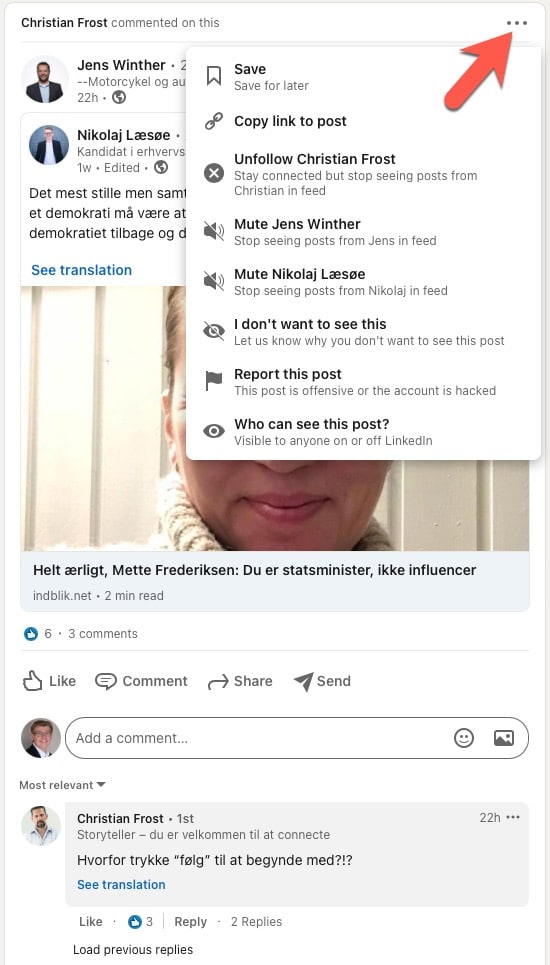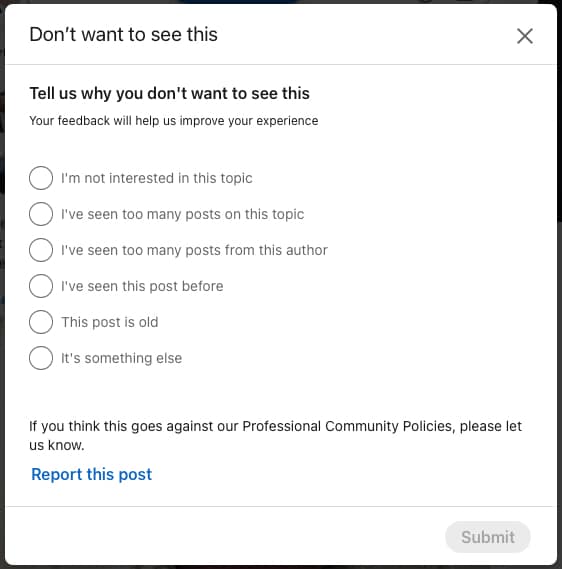
Are you the type of person who jumps on any opportunity to write a comment expressing your displeasure with a post on social media? Then, perhaps, you should think twice. You help the post you dislike get even more visibility.
Social media makes money by selling ads. Ads that are supposed to make you buy something (commercial) or do something (political). A crucial element in getting as many ads sold as expensively as possible is having you spend as much time as possible on the social medium. Therefore, their algorithms keep a very close eye on what catches your interest and then pushes more of that type of content into your feed.
Commenting on a post is the same as telling the social medium that the topic is engaging and relevant. Otherwise, you wouldn’t spend time on it. The algorithm captures your behavior, sends the post out to more people, and remembers your interest. In the future, you will get more of the same. You have just documented that you want to spend your time on it. Stealing and spending your time and attention are some of the most important objectives of social media.
On LinkedIn, people often write comments saying that a post does not belong here. Instead, it should have been posted on Facebook or Twitter. “LinkedIn is not Facebook” is a statement I often see.

Apart from being nonsense, it is also relatively unintelligent.
Who decides what to post on a social platform? The users, of course. Promoting yourself as the content police is both presumptuous and pretentious.
The unintelligent behavior is to award attention to a post you don’t like. I can understand that you may want to express disagreement with a point of view on a subject that you deem worthy of a discussion. But helping a message you don’t think should have been posted in the first place by giving it further attention is not particularly clever, is it?
If a post bothers you so much that you can’t ignore it and scroll on, you can use the three small dots in the right corner.
In the picture above, my friend Christian Frost has commented on a post about Mette Frederiksen (our prime minister), of whom he is probably not too enthusiastic. By pressing the three small dots, I now get a few options.
I can unfollow Christian Frost. I don’t want to do that because he posts some good and funny car review videos that I enjoy watching.
I can mute the two other people who posted and shared the post. I do this occasionally, but not in this case.
Or I can choose “I don’t want to see this”, which gives me several choices.
I chose the option to tell LinkedIn that I am not interested in posts about Mette Frederiksen. Other media fulfill my need for opinions about the country’s prime minister.
Getting a relevant feed

There are several options attached to the three small dots. By investing some time in telling LinkedIn’s algorithm about your preferences, you can increase the relevance and quality of your so-called home feed.
I have 30,000 connections on LinkedIn, and luckily, few post anything. Among those who do, there is a lot of noise. I occasionally spend some time training LinkedIn’s algorithm, and it has helped tremendously with the quality of what emerges.
